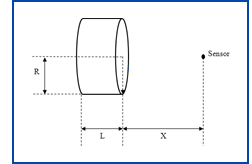|
Daylight
Saving Time
begins Sunday, March 13. Set your clocks forward an hour.
It’s also a good time to prepare for Pi Day (see story
at right). |
|
|
|
|
|
 |
|
Pi
Day Applications |
|
|
In honor of Pi Day
3/14/16, here’s a typical
angle calculation for AAT-Series
angle sensors:
The equation can be used in C++ or Arduino to calculate the angle, in degrees,
indicated by an AAT sensor’s two outputs.
We could take the inverse sine and cosine of each output, but the values would
have to be scaled. Because the arctangent is a ratio calculation, it doesn't need
scaling, and cancels power supply variations.
Unlike the one-variable arctan function, the two-variable function provides a
full 360-degree angle range.
Here's a video
with more information.
|
 |
|
Embedded
World |
|
|
Distributor HY-LINE Power Components showed IsoLoop isolators at the recent Embedded
World exhibition in Nürnberg, Germany. There was strong interest in NVE
isolators, particular for SPI.
|
 |
|
|
Application
Tools |
|
|
Magnetic
Field Strength
vs. Magnet Distance
Quick.

What’s the field strength one inch from the face of a 6 mm diameter,
4 mm long Ceramic 8 magnet?
You could dust off Maxwell’s equations and do some multivariate calculus.
Or you can download our Flux
Density Calculator Excel spreadsheet.
The spreadsheet calculates magnetic field intensity in Oersteds from a disk or
bar magnet at various distances. It’s invaluable for the design of magnetic
sensor systems, and can make you the life of any party.
This video shows a live demonstration:
|
|







